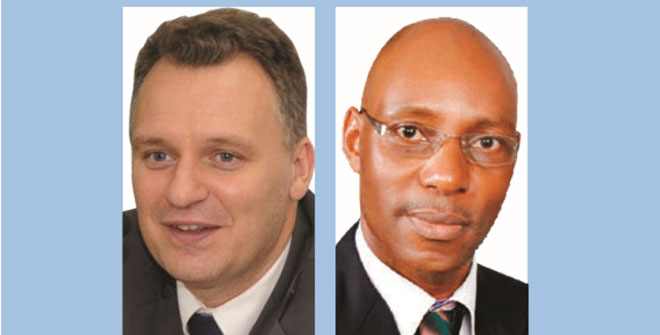
State House’s role
Mutabazi copied his directive in the letter to ICT Minister, Frank Tumwebaze, IGP Kayihura, the former Director ICT, Amos Ngabirano and Maj Gen. Muhoozi Kainerugaba.
Muhoozi’s involvement is a window into the involvement of State House. President Museveni was directly involved in procuring the technology, which among others also monitors Mobile Money operations, international calls and other data operations.
It is not clear how much was invested in the technology but at the time it was being procured, estimates put the cost at between $20-30 million (Shs 66 billion—99 billion).
Museveni at some point consulted with Peter Kahiji, the director technical services of IT sector regulator, NITA-U.
President Museveni also brought on board Josephine Wapakhabulo, the daughter to the late James Wapakhabulo, who was Uganda’s speaker, foreign affairs minister and Deputy Prime Minister.
Ngabirano, Kayihura and UCC Executive Director, Godfrey Mutabazi had all worked on the procurement of the technology before Wapakhabulo came in. It is not strange; therefore, that Mutabazi is asking that the telecom companies allow the police to monitor their activities.
Police is also being asked to manage the technology because initially, insiders say, for President Museveni, the biggest motivation to procure the technology was in its security features like enabling eavesdropping. It is not yet clear how the fall- out between President Museveni and police has affected this arrangement. Insiders who spoke to The Independent say State House is now in charge of the technology.
Apart from its security features, the technology was also expected to put an end to suspected under-declaration of revenue by the telecoms.
Since telecoms have been “self-declaring”, the UCC has only been levying fees on them basing on what the telecoms say they earned.

UCC collects an annual levy on telecoms gross revenue of 2 per cent. The levy is too critical, it constituted 27% of the Commission’s projected revenues in the financial year 2014/2015. And UCC is required to remit 1% of the operators’ levy to the Consolidated Fund.
However, in his 2015 report published this year, the Auditor General, John Muwanga, added his voice to those that have raised as a red flag, the fact that the regulator relies on the operators audited financial statements to raise invoices of the 2% levy on the revenue.
“A review of the revenue collection system revealed that the Commission has not yet built capacity to independently verify the revenue figures reflected in the operators audited financial statements to counter the likelihood of audit risk/ or collusion,” the report reads, “As such, there is a risk of under collecting revenue for the Commission in the circumstance.”
At the height of the MTN mobile money scandal, it was alleged that the operator had been under-declaring the volumes of its Mobile Money platform. Apparently, MTN was reportedly making Shs14 billion a day but was declaring Shs9 billion.
In his 2016/17 budget speech, President Museveni claimed that the telecom companies were under declaring and as a result evading an estimated $400 million per year in taxes.
Big money targets
Apart from the monitoring aspect, insiders say, the technology might also bring the country closer to dealing with a telecom fraud known as voice traffic termination fraud or SIMbox fraud, which costs telecom companies revenue and the government taxes.
International studies have indicated that network operators lose about 3% of the annual revenue due to fraudulent and illegal services. Some researchers put the total losses from the underground mobile network industry to be $58 billion in 2011.
Apparently, fraudulent SIMboxes hijack international voice calls and transfer them over the Internet to a cellular device, which injects them back into the cellular network.
As a result, callers from abroad end up appearing as if they are calling with local numbers.
The calls become local at the destination network like MTN, and the cellular operators of the intermediate and destination networks do not receive payments for the call routing and termination.
Besides causing the financial loss, an international study shows that SIMboxes degrade the local service where they operate. Often, cells are overloaded, and voice calls routed over a SIMbox have poor quality, which results in customer dissatisfaction, the study adds.
In Uganda, some of the major players in this fraudulent trade also happen to be major players in the telecom sector, senior officials in cabinet and some Chinese dealers.
 The Independent Uganda: You get the Truth we Pay the Price
The Independent Uganda: You get the Truth we Pay the Price



